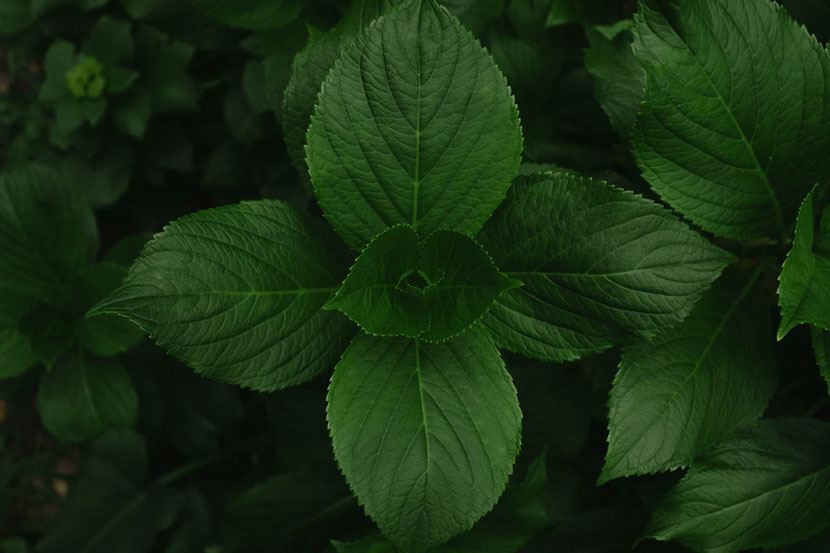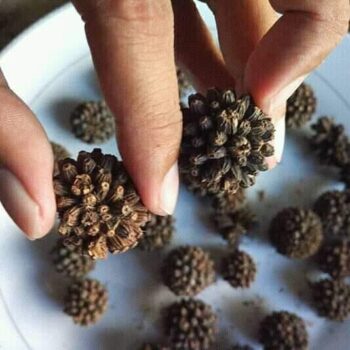
As more people decide that kratom is right for them, interest in growing kratom at home is skyrocketing. Whether you grow your own kratom plant indoors or out in a garden, it’s a possibility most kratom advocates will look into it at some time or another. Let’s look at both whether you can and whether you should grow your own Kratom.
The Roots Of Kratom
The Mitragyna speciosa is an evergreen tree that is native to Southeast Asia. Considered by locals to be an indigenous medicinal herb, a myriad of health benefits are ascribed to its usage. However, the FDA still recognizes no medical benefit and allows kratom to be used for research purposes only. Through their own independent research, however, many people are choosing to make Kratom part of their daily lives, and that can include growing kratom too.
In its natural habitat, kratom grows in the fertile soil of tropical jungles and rainforests. Dense nutritious soil supports healthy growth, and the warm dry air means a drink is never long off. There, kratom plants can grow up to 20-feet tall in the first two years of their lives. These are the conditions the plant is adapted to, so you’ll need to keep them in mind when deciding whether to grow your own kratom or not.
What Do Kratom Seeds Look Like?
All plants come with their own distinctive plant seeds. Kratom tree seeds are no exception.
Fledgling kratom farmers may initially be confused by their kratom plant seeds. That’s understandable! Because… well, it’s not obvious at first what you’re looking at!

The kratom seeds are housed inside the kratom seed pod. But even when you’ve cracked open your seed pod, it can be tough to know exactly what you’re looking at.
The best bet is a visual reference. We recommend taking a look at this visual guide to kratom seeds and seed pods, courtesy of Reddit user ‘kratomsprout’.
Can Kratom Plant Seeds Grow in North American Climates?
Kratom trees are notoriously temperamental and may struggle to thrive in many areas of the United States.
However, the US features a startling variety of climates, and some areas may be reasonably well-suited to growing kratom plant seeds.
Areas that mimic kratom’s native Southeast Asia conditions will offer kratom plant seeds the highest chance of success.
Kratom plants thrive best in tropical climates, so areas along the Gulf Coast may be better suited to kratom farms. Even in these areas, however, kratom farmers may need to take special care to provide the conditions and TLC that these testy plants crave.
NOTE that, even if you have the perfect climate, cultivating kratom may not be legal in your state! For more information on where kratom cultivation is and is not permitted, see our Guide to Kratom Legality.
For more on the difficulties of growing your own crop of kratom trees, see our Guide to Farming Kratom.
Kratom Seeds May Not Be the Best Way to Grow Your Own Kratom Tree
In nature, kratom trees (like most plants) reproduce by spreading seeds. So you might think that, if you want to plant your own kratom tree, seeds are the best option for you. But as natural as that seems, buying kratom seeds is probably not the best option for DIY kratom farmers!
The main problem with planting kratom tree seeds? Freshness.
Even when kratom seeds are fresh as can be, not all of them will successfully sprout into a baby tree. According to many kratom experts, about 20% of fresh kratom seeds can successfully germinate. And what’s “fresh”, you ask? Seeds that have been separated from the kratom tree for no more than a few days!
If you’re working with dried kratom seeds like those you can find online, expect your germination rate to be even lower! Commercially available kratom seeds are notoriously difficult to germinate, with success rates of around 5%. So if you want to grow your own kratom plant, seeds are not be your best option.
Kratom Clones: A More Viable Alternative to Kratom Plant Seeds
So if kratom seeds are a poor option, what is the budding kratom farmer to do? Why not try your hand at a bit of cloning?
Though it may sound like something out of high science, cloning kratom plants is a well-established way of jumpstarting your kratom tree crop.
Kratom clones are made from trimmings of pre-grown, established kratom trees. As such, they do not need to germinate and therefore have a 100% success rate of turning into a kratom tree. That is, as long as you properly care for your kratom plant, which can be daunting in and of itself!
Kratom clones can be tricky to come by, but several online vendors offer them for sale. If you’re lucky enough to know a kratom farmer, however, your best bet is likely to ask them to consider producing a clone from their favorite kratom trees!
General Considerations
This is not only a matter of why but how to grow kratom. In order to grow well, Kratom needs a few conditions met.
- Light – Kratom plants need a lot of light. They love the sun, and if they don’t get it, you can see your plants wither and die. Outdoors, you’ll want to plant your Kratom where it can get direct sunlight. If you’re growing Kratom indoors, you’ll need some pretty hefty grow lamps to keep them well lit.
- Water – So much water. Kratom plants are near impossible to overwater, and you don’t have to plan for drainage in their case. Make sure they’re getting plenty of water to the roots, but also remember to spray them regularly if they aren’t in a humidity-controlled room.
- Soil – Rainforest soil is incredibly dense with nutrients. Kratom needs soil that is extremely rich in nitrogen. The soil should be fairly acidic, with a pH level of 5.5 to 6.5. You’ll need to monitor this level carefully, and the growing Kratom plant’s biochemistry can affect the soil’s pH level as it grows.
- Temperature – Since it’s a tropical evergreen, Kratom does poorly when the temperature dips below 60℉, and sustained temperatures below 50℉ can kill it. For most of the US, this temperature will be hard to guarantee when growing Kratom outside. A greenhouse, however, is sufficient to maintain the temperature in some areas, and growing Kratom indoors handily lets you ensure the temperature at which it grows, though if you’re relying on a central air system, the whole house will be a slave to your plant’s comfort levels.
- Space – Plants need room to grow, and the same goes when you grow your own kratom. The bigger you want to grow them, the more space they’ll need. Outside, a standard-sized garden will allow enough space for several growing Kratom plants. Indoors, you will need to use containers that offer sufficient space to support each plant. While smaller planters may work for seedlings, they will soon outgrow them, so starting with a larger pot is better. It’s far easier to get a large pot of soil appropriately conditioned than a series of successively larger containers until you find the right one.
- Regulation – Ok. The kratom plant doesn’t actually care about regulation, but you should. As locations look at the possibility of scheduling Kratom as a controlled substance, banning Kratom outright, or putting severe restrictions on its cultivation and usage, it can impact your rights and responsibilities when growing Kratom. Even if you’re in an unregulated area, you’ll want to ensure it can’t easily fall into the hands of youth or pets. With the current FDA fear campaign against Kratom in full swing, the last thing you want is to be associated with an accident.
To add to these very particular conditions, kratom has earned a reputation as a notoriously difficult plant to get started. Seeds require the same exacting conditions while germinating, and cuttings will refuse to root or outright wither if conditions are not met. For this reason, many new growers choose to purchase small yet already rooted plants. Unless you’re an experienced kratom green thumb, that is probably your best bet where available.
Soooo….Maybe?
The short answer about whether growing kratom at home is: yes, a kratom plant can be grown. If you can figure out how to grow kratom, that is. In most areas of the US, however, it’s not going to do very well without a lot of help and resources being devoted to it. From near constant watering to the consistent application of fertilizer, you can expect it to become a labor of love that is heavy on the labor part.
Growing kratom indoors will save your plants from a freeze, but it won’t save you a lot of work. Without access to natural rain and fertilizers, your plants will be entirely dependent on you for care. Meanwhile, they’ll also be taking up your spare room, family room, or wherever else you’ve turned into your climate-controlled green room.
That being said, once grown, kratom trees are a consistent source of fresh kratom leaves. Once harvested and dried, they can be processed into a powder. It’s relatively cheap as long as your costs to keep the trees healthy remain low enough, and there’s a certain satisfaction to being more self-reliant.
But Should You?
If there is no way available to get high-quality kratom, growing kratom at home is a viable alternative. If that’s not the case, Kratom Spot works with the most trusted growers in the business to bring you the raw powder, extracts, and capsules you need in the most popular strains. Just get on the internet, and you’re a few clicks away from premium kratom being delivered straight to your door. If you have any questions about our products, call our customer service team at 888-510-2038. Order your Kratom from Kratom Spot today.

